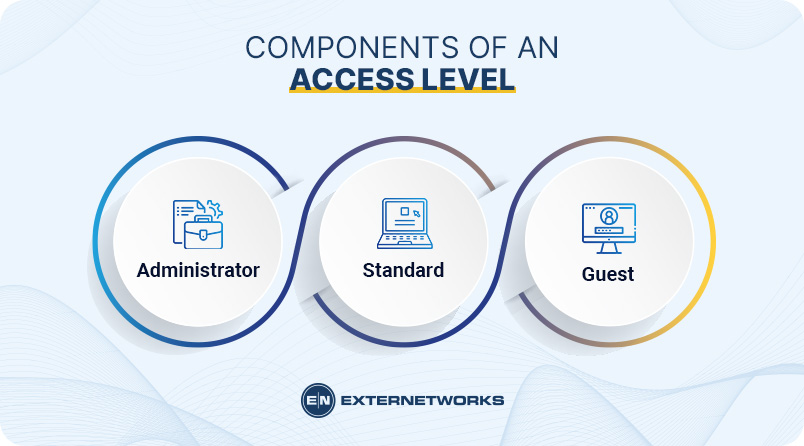Access levels are a way for organizations to control who has access to information or resources. They are also known as security labels, permissions, roles, rights, or privileges.
Access levels are often used to determine whether someone should be able to view certain documents or perform certain tasks. For example, they might allow employees to see their pay stubs but not their tax returns.
An organization’s access levels are determined by its policies and procedures. These policies and procedures are typically written down and stored electronically. The policies and procedures document defines the rules that govern access levels.
Keep your networks in check! Our monitoring services offer proactive solutions for a seamless digital experience. Elevate your business now!
Request a Call BackAccess level refers to the privileges a user has within a system or network. In computer security, access levels are assigned to each user account. The higher the level, the greater the privilege. For example, a user with administrator rights would have full control over the entire system, whereas a normal user would only have limited access.
Access levels are often used to determine whether a user should have access to certain information or resources. They also provide a way to restrict users from accessing sensitive data or systems.
The access level of an account is determined by the permissions that you grant to that account when you create it. When a user logs in, Windows will check his/her access level and then apply any necessary adjustments. If the user’s access level is lower than what is required for the action being performed, Windows will deny the request.
In general, access level determines how much power a user has on a system. It can be used to limit the amount of damage that a malicious user could do if they gain administrative access to your system. This is especially important for computers running as servers, where unauthorized users may gain access to sensitive information stored on the server.
When setting up a new user account, you must specify the access level for that account. You can set the access level using the Local Security Policy tool.
Access level helps protect against unauthorized changes made to a system. An attacker who gains access to a system through some other means (e.g., social engineering) might not know about the access level of the accounts he/she needs to change. If the attacker tries to make changes to the system without knowing the proper access level, the changes might fail because the account doesn’t have enough authority to perform the requested operation.
Another reason why access level is important is that it provides a mechanism for restricting access to sensitive information. A user with administrator access might be able to view all files on the system, but a user with a standard access level cannot see those same files.
User-level refers to the privileges granted to a particular user account. User-level controls which applications can run under that account. For example, a normal user account usually has no special privileges. However, if you assign this user account administrative rights, the user can install programs and modify settings.
The components of an access level include:
Administrator: Full access to the system. Allows the user to perform most operations on the system. Can add, remove, and edit users, groups, and domains; manage passwords; configure services; and more.
Standard: Limited access to the system. Does not allow the user to perform many functions. Cannot delete, rename, move, copy, or format drives. Only allows the user to print documents.
Guest: No access to the system. Users with guest accounts can log onto the computer, but they cannot perform any actions. They cannot use the mouse, open windows, or even save their work.

A database access level is similar to an access level in that it limits the type of data that a user can read from a database. Database access levels are assigned at the table, column, or row level. These levels determine whether a user can select rows in a table, view columns in a table, or query tables based on specific criteria.
There are five types of database access levels:
Read-only: The user can only view data in the database. He or she cannot update, insert, or delete data.
Select: The user can select data from the database. He or she cannot update, insert, delete, or alter data.
Update: The user can update data in the database, and they cannot select data.
Insert: The user can insert data into the database. He or his cannot select data.
Delete: The user can delete data from the database.
In summary, the access level determines the user’s authority to modify data. Security clearance and level of access determine what information users can access. For example, a data processor at a manufacturing company may be authorized to view and process highly sensitive product information but cannot modify it. For sysadmins, the most important part of the access level is the system privileges that come with lower access levels. In this case, they can view system logs and user activity, but they cannot modify the system.
